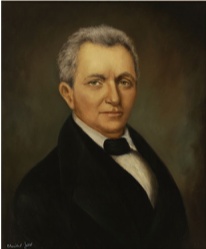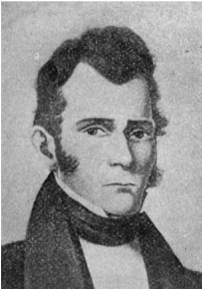In the 1820s, the US continued its piecemeal effort to remove Indigenous nations from the area of the Old Northwest Territory. The Cass treaty-making machine and officials from the newly formed States of Illinois and Indiana negotiated treaties that opened Indigenous land to white settlement and relocated Indigenous nations to lands west of the Mississippi.
 US removal policies also accelerated in the Southeast, animated by aggressive expansionist interests in Georgia and facilitated by an intimidating US military presence. Indigenous nations ceded more land, at times through treaties that were clearly fraudulent, in North Carolina, Tennessee, Georgia, Alabama, Mississippi and Florida. US removal policies also accelerated in the Southeast, animated by aggressive expansionist interests in Georgia and facilitated by an intimidating US military presence. Indigenous nations ceded more land, at times through treaties that were clearly fraudulent, in North Carolina, Tennessee, Georgia, Alabama, Mississippi and Florida.
As the decade progressed, the Clark machine in St. Louis and the US military began “clearing room” in the west for eastern tribes. Some of the largest land cessions ever made would facilitate the ethnic cleansing that would follow in the next decade. At the same time, the US increased its military and trade presence even further west. “Mountain men” ascended the Missouri River to harvest furs in Indigenous-held territory, inevitably requiring a military presence to address the resulting international tensions; and the US negotiated permission to build roads from Missouri to Santa Fe, with an eye toward opening trade with Mexico.
During the 1820s, a new economic interest arose to rival land speculation and the fur trade as a motivation for US treaty making. The extraction of natural resources – mining for lead and copper, and eventually the harvesting of timber – transformed elements of the natural world into profitable commodities and made fortunes for US treaty signers.
Southeast Tribes 1819 to 1823
In the aftermath of the Seminole War (1816-1819), the US and the State of Georgia continued an aggressive campaign of expanded settlement and protection of slaveholder interests. Secretary of War John C. Calhoun negotiated the Cherokee cession of lands in North Carolina, Tennessee, Georgia and Alabama. Andrew Jackson
 executed a removal treaty in which the Choctaw ceded west central Mississippi – half of their homeland -- in exchange for land in Arkansas. And in 1823, William Duval – a Jackson aide who replaced the general as governor of Florida Territory – negotiated the cession by multiple tribes of most of Florida. After Georgia officials negotiated a Muscogee cession of land in the heart of Georgia in 1820, the Muscogee General Council made it clear that they did not intend to make further land cessions. Muscogee leader William McIntosh, however, signed a treaty in 1825 that ceded three million acres in Alabama, for which he received personal payment of $200,000. The Muscogee General Council ordered and carried out his execution, and the treaty was annulled. Subsequent treaties in the next two years did finalize the removal of the Muscogee from within the boundaries of Georgia. executed a removal treaty in which the Choctaw ceded west central Mississippi – half of their homeland -- in exchange for land in Arkansas. And in 1823, William Duval – a Jackson aide who replaced the general as governor of Florida Territory – negotiated the cession by multiple tribes of most of Florida. After Georgia officials negotiated a Muscogee cession of land in the heart of Georgia in 1820, the Muscogee General Council made it clear that they did not intend to make further land cessions. Muscogee leader William McIntosh, however, signed a treaty in 1825 that ceded three million acres in Alabama, for which he received personal payment of $200,000. The Muscogee General Council ordered and carried out his execution, and the treaty was annulled. Subsequent treaties in the next two years did finalize the removal of the Muscogee from within the boundaries of Georgia.
Clark Machine 1819 to 1824
In 1819, members of the St. Louis-based treaty making machine travelled across the River to Edwardsville, Illinois to negotiate a treaty with the Kickapoo. There Auguste Chouteau (with two of his sons, two sons-in-law, a brother-in-law and a nephew) joined Benjamin Stephens, Indian agent and local bank president, who had become wealthy running the Edwardsville land office. The Prairie Band of the Kickapoo ceded claims to 14,000,000 acres in Indiana and Illinois at this treaty; in a treaty the next year, the US ceded land in Missouri to the Kickapoo, who began their removal to the west. In 1822, two other members of the St. Louis machine – Richard Graham and Thomas Forsyth – negotiated the right to build a road through the territories of the Osage and the relocated Sauk and Fox, to open trade at Santa Fe in newly-independent Mexico. William Clark himself returned to treaty making in 1824. At two treaties signed on the same day by Clark (and two of his sons, his step-son and a nephew), the Iowa and the Sauk and Fox peoples ceded their claims to the northern third of Missouri to the US.
Cass Machine, 1819 to 1828
With
the admission of Illinois as a state in 1818, Michigan Territory expanded in size; Governor Lewis Cass’s domain extended from Detroit to the Mississippi River. Over the next ten years, he led negotiations to win significant land cessions in Michigan and Indiana, including the sites of South Bend, Lansing, Saginaw and Logansport; the last two of these towns were founded by men who signed the treaties. Many smaller cessions were also made, including land near Green Bay and the site of Sault Ste. Marie. Increasingly, however, Cass came to focus his treaty making efforts on the acquisition of minerals rights. In 1820 he led his treaty making machine on a road trip to identify mineral deposits from Michigan to the headwaters of the Mississippi. Treaties made with the Ojibwe and Ottawa on this trip resulted in small land cessions, including islands in Lake Huron that contained important deposits of gypsum. A report by the expedition’s geologist, Douglass Houghton, would later instigate Great Lakes copper mining. In 1828 Cass tried to convince the Ho Chunk people to cede lead deposits in present-day Wisconsin, but was able only to secure permission for US miners to travel in Ho Chunk territory.
Old Northwest, 1819 to 1829
In 1819 and 1820, Benjamin Parke – the old US Congressional
 delegate from the defunct Indiana Territory – negotiated the last cessions of reservations that completed the removal of the Kickapoo and Wea from the State of Indiana. Men who signed these treaties, such as William Markle, became prominent owners of land near the treaty sites. An 1823 cession treaty with the Seneca in New York focused even more narrowly on land speculators, who were named in the treaty itself as purchasers of the land. In 1828, Andrew Jackson was elected President, and appointed Indian agents George Vashon and John McElvain who engineered removal of the Delaware from Ohio. Another Jackson associate, John Tipton, acquired one of the last Miami reservations in Indiana for the US; he later founded the town of Columbus, Indiana 45 miles from that site, and was elected to the US Senate from Indiana. The crisis point in the area of the Old Northwest Territory during this period, however, resulted from the flood of lead miners who encroached on Indigenous-held land in present-day Wisconsin. The US forced cessions of an area containing rich lead deposits from the Ho Chunk and the Ojibwe. The US commissioner for these treaties was Henry Dodge, the most aggressive of the lead miners and a future Wisconsin governor and US Senator. delegate from the defunct Indiana Territory – negotiated the last cessions of reservations that completed the removal of the Kickapoo and Wea from the State of Indiana. Men who signed these treaties, such as William Markle, became prominent owners of land near the treaty sites. An 1823 cession treaty with the Seneca in New York focused even more narrowly on land speculators, who were named in the treaty itself as purchasers of the land. In 1828, Andrew Jackson was elected President, and appointed Indian agents George Vashon and John McElvain who engineered removal of the Delaware from Ohio. Another Jackson associate, John Tipton, acquired one of the last Miami reservations in Indiana for the US; he later founded the town of Columbus, Indiana 45 miles from that site, and was elected to the US Senate from Indiana. The crisis point in the area of the Old Northwest Territory during this period, however, resulted from the flood of lead miners who encroached on Indigenous-held land in present-day Wisconsin. The US forced cessions of an area containing rich lead deposits from the Ho Chunk and the Ojibwe. The US commissioner for these treaties was Henry Dodge, the most aggressive of the lead miners and a future Wisconsin governor and US Senator.
Atkinson Expedition, 1825
In 1825 a fur trade expedition moved up the Missouri River with the intention of cutting Indigenous hunters out of the fur trade. “Ashley’s Hundred,” as the expedition was known, would be the beginning of the legendary “mountain man” fur traders. The expedition, predictably, met with violence from the Arikara nation, and the US sent a military force to settle the dispute, placate other Indigenous nations, and reinforce the US role in trade along the Missouri with a series of treaties. This military expedition was led by General Henry Atkinson, who was charged with restoring international relations; and the aggressive Indian agent Benjamin O’Fallon, William Clark’s nephew, who went so far as to beat and whip Indigenous negotiators. Contention between the two leaders came to a head at dinner one night on the expedition, when they tried to stab each other with a knife and a fork.
Prairie Du Chien, 1825-1826
In 1825, representatives from the US and nine Indigenous nations met for a treaty at Prairie du Chien in (present-day) Wisconsin. This was the only treaty ever signed by both of the powerhouse nations of the Upper Mississippi, the Dakota and the Ojibwe; or by both the Lewis Cass and William Clark. The ostensible purpose of the US was to create peace among these nations by imposing clear boundaries on their homelands. The practical, legalistic result was that aboriginal title to lands in the Midwest was simplified; any tract of land could be ceded by a single nation, rather than several nations with overlapping territorial claims. Within the boundaries set at Prairie Du Chien, Cass and Clark promised, the nations could live unmolested forever, but land cessions in the area began within two years. In an 1826 treaty, Ojibwe people who had been absent at Prairie du Chien signed on to the agreement. For a brief article on how the 1825 "peace" treaty at Prairie du Chien kicked off a series of land cessions in present-day Wisconsin, see "Treaty Councils, from Prairie du Chien to Madeline Island" (Wisonsin Historical Society), here.
|
Pre-Removal: Western Land, 1824-1828
Throughout the 1820s, the US negotiated treaties that called for nations in the east to move west of the Mississippi River. Beginning in 1824, William Clark and US military personnel began negotiating land cessions in the west, to make room for eastern tribes. Staggeringly large tracts of land were ceded in present-day Arkansas, Missouri, Kansas, Nebraska, and Oklahoma by western nations including the Quapaw, Osage and Kansa nations, and even by eastern tribes (Cherokee, Choctaw, Shawnee) who had already relocated once. The US also obtained permission from the Osage and Kansa to build a road from Missouri to Santa Fe to facilitate trade with Mexico. |
